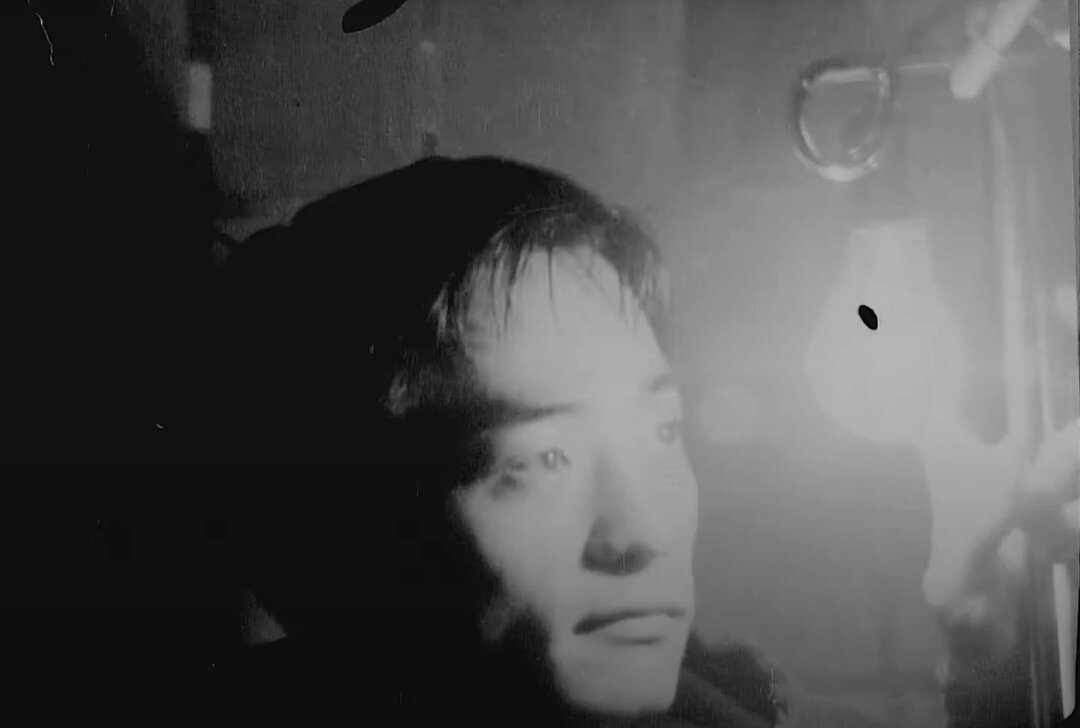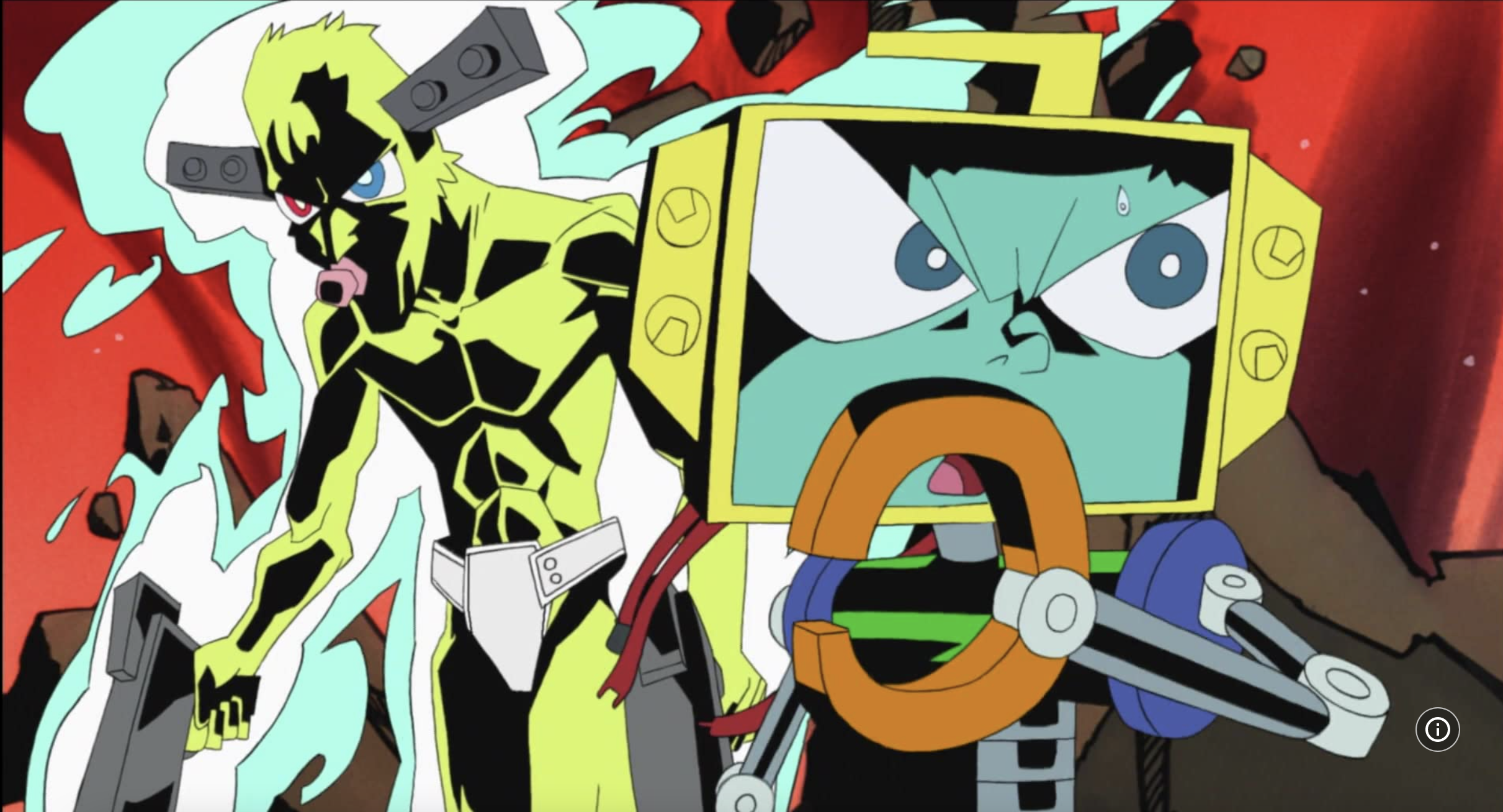Guided By Voices: The Electrifying Work of Stom Sogo

Stom Sogo was a Japanese video artist and experimental filmmaker who created a sprawling, distinct body of work that revelled in being both overwhelmingly rebellious and personably raw.
Courtesy of The Visualist
Despite it approaching a decade since his untimely death in 2012, much of his life remains shrouded in mystery and his works relatively obscure. Nowadays, he appears to exist as a kind of digital ghost with low resolution copies of his art floating around corners of the internet, coveted by those it has touched who clamor for more information about the man who made them. Through old interviews with friends and archival gallery screening biographies, a portrait of his life and his work begins to emerge.
Courtesy of IFFR
Sogo was born in Osaka in 1975 and spent his childhood and teenage years growing up in Japan until he finished high school. After graduating, in 1992 he moved to New York and eventually began working as a projectionist for Anthology Film Archives at the Maya Deren Theater, becoming heavily involved in the NYC film scene. At the time, Anthology served as somewhat of a hub for local experimental filmmakers (though it was not nearly as vibrant as it once was decades prior), and it is here where Sogo met many of his future collaborators and friends, including artists Andrew Lampert and Raha Raissnia, who later became one of his roommates. He eventually enrolled at Hunter College in 1996, studying for a BS in Art & Film, which he obtained after graduating in 2000.
By Andrew Lampert, courtesy of Anthology Film Archives
Afterwards, in order to renew his soon-expiring student visa and remain living in the US for a few years, Sogo decided to attend grad school at the San Francisco Art Institute, where he graduated from in 2002 with a degree in New Genres. Following this, his student visa once again expired in 2004, and he was forced to return home to Osaka, where he began working with his parents and attempting to remain in touch with all of his friends in the States, continuing to create video works and passing them along overseas via the internet and showing them at various festivals and galleries. He would remain in Japan for the latter part of his life, and tragically passed away at his home on July 1st, 2012 from unspecified causes at the age of 37, announced by his sister on Facebook. Sogo’s work has been shown at multiple galleries and festivals across the world both in his life and after his death, including exhibitions at NYC’s own MoMA and the Whitney Biennial, as well as overseas at the Image Forum in Tokyo and the Irish Film Institute in Dublin.
Still from Guided by Voices (2000)
Branded as both a dynamo and a rebel by his peers, Sogo’s frenetic energy was channeled and honed through his video work. Sogo’s films operate on a kind of inhuman, raw impulse and make heavy use of both found footage (from Japanese cooking shows to telephone commercials) and his own personal video diaries, dense multi-layered flickering textures, extremely noisy (and often original) sound collages, looping and stuttering effects, and extensive rephotography techniques. At the core of many of Sogo’s works are his signature intensely strobing and flickering colors and visuals that are meant to shock and disorient the viewer, often paired with harsh noise pieces, perhaps best depicted in his 2000 film Guided by Voices, which split the award for best experimental film at the 2000 New York Underground Film Festival.
Still from Take This Tablet (2004)
Sogo’s continual fascination and experiments with rapidly flashing light partly came about as a result of his attempt to depict the visuals he witnessed during his own struggles with epileptic seizures, writing for the description of his 2006 film Sync Up Element: “This is about the dreamlike images that I saw while having epilepsy seizures, as they [have] quite often happened in the past years”. Sogo was also known to continually remix and repurpose his older material into new pieces, with many having multiple versions with different variations in the audio or visuals, commenting that “If the old piece is not talking to the audience in this present time, it is better to make them fresh by cutting a bit. Almost every work I have made has its various versions, in a similar way as [to] how a musician makes many different cuts or mixes of one song”. One of his last known works is 2012’s aptly titled Stom Sogo Mix, which repurposes and builds upon footage from his previous films including Guided By Voices (2000) and Take This Tablet (2004), soundtracked by an original DJ mix and was made as a personal gift from Sogo to a friend - and even includes a smoke break.
Still from Slow Death (2000)
Sogo’s earliest known work came to fruition in the mid 1990s, as he began working on both large-scale video installations and experimenting with Super 8 film and personal video diaries. His installation work was often born out of his love for what he called “stupid tricks” - which were unique (and sometimes bizarre) ways to play with video projection and space. One of his first video installations, The Incredible Lite Kits, was part of a group show exhibited at Artist Space in SoHo in the summer of 1997. Lite Kits consisted of 3 Super 8 projectors that projected film loops at different sizes and directions onto the floor of the gallery and in two large columns in the center of the installation. There were different light reflecting objects like disco balls and color gels spread around the room for the projection to bounce off of and create dizzying effects and patterns- all of which was recorded with a live security camera feed projected onto a monitor nearby for viewing. According to Sogo’s close friend and fellow filmmaker Andrew Lampert, “the loops of film were spilling out onto the floor, gathering dirt, twisting up and slithering about like a snake… Somehow, the film continued to feed into the projector, no problem whatsoever. It was nerve-racking and I became anxious. What if that were my film?”.
Still from YA PRIVATE SKY (2001)
Other notable 90’s efforts that play with video projection as a tool for potential chaos include Sogo’s 1999 film Space Cat, a short video piece that consisted of footage he had shot of his bedroom door projected onto that same door and shot again, before finally being edited and projected again onto the same door for his friends to lie down on the floor and view as a film, an effect he described as “ultra science fiction-like”. Stom’s penchant for the extreme and the chaotic even manifested in his artistic inspirations, such as his admiration for American underground gay author Dennis Cooper, who’s sexually graphic 5 novel series known as the “George Miles Cycle” inspired Sogo to create his own alarming and arresting video art series: Closer (1995), Frisk (made with surviving footage from a previous installation), Tri (1998), and Period (2001).
Courtesy of IFFR
Sogo’s later period work is characterized by a shift away from Super 8 film to more tape and digital endeavors, with footage mostly culled from personal video diaries he shot on a MiniDV camcorder. 2001’s Silver Play is a stark departure from his usual strobing lights and glitched out visuals, with Sogo instead opting to utilize a combination of footage from Japanese TV and his own personal material and playing more with audio manipulation than video. His bluntly titled 2003 piece P.S. When You Are Going To Die makes great use of his own diaries as baseline footage for his chaotic visual corruption and audio manipulation. Mostly shot during his last years in New York, it features a handful of notable scenes including a woman walking alone in heels on the street at night and a grand finale 5 minute long take of a couple talking and embracing filmed rather voyeuristically from a zoomed in distance. Sogo would continue to experiment with miniDV and digital video through the end of his lifetime, sometimes dialing back the frenzy and visual noise he was known for, culminating in a surprisingly tranquil and idyllic 2012 piece titled an island tone, which featured rotating textural footage set to songs from Tim Koch’s 2003 electronic album “islandtones”.
Courtesy of IFFR
When asked about what guides his work, he remarked that “[A] movie’s reality should be as nasty and fucked up as possible, so we want to get the fuck out of the theater and hope for something better in life... I try not to have a message or even words in my movies... [They] are just mental eye candy that taste sweet first, seizure second”. Fittingly, a posthumous retrospective of Sogo’s work screened at Anthology in 2013 (and curated by Lampert) was titled “Sweet First, Seizure Second: A Tribute To Stom Sogo.”
Courtesy of the artist
What will come of Sogo’s work and legacy in the future unfortunately remains to be seen. There are currently boxes of hundreds of his tapes and video material sitting at his former workplace and communal hangout Anthology Film Archives that are, according to their archivist John Klacsmann, currently in the process of being digitized and archived for free viewing online, and such an undertaking requires a lot of time and care. Aside from a handful of retrospective screenings scattered across the previous decade (mostly in 2013), much of Stom’s work has yet to be seen publicly. Even in the digital age, his work is difficult to locate and view or even find still frames from - with only a handful available on platforms like YouTube and Vimeo in low resolutions. One can only hope that a growing interest in and discussion about his work and his life online will lead to his filmography being more publicly accessible and that the work of such a visionary will finally get the recognition that it deserves.
A selection of Sogo’s work that is available for viewing follows:
YA PRIVATE SKY (2001)
Silver Play (2001)
Periodical Effect (2002)
P.S. When You Are Going To Die (2003)
TRI (2004)
Take This Tablet (2004)
About The Author
Duncan Taylor is a video artist and graphic designer living in NYC. He has a strong passion for Japanese film and video art and loves sharing what he knows with others. You can find him on Instagram @duncantaylor or check out his website at http://dunc.club







